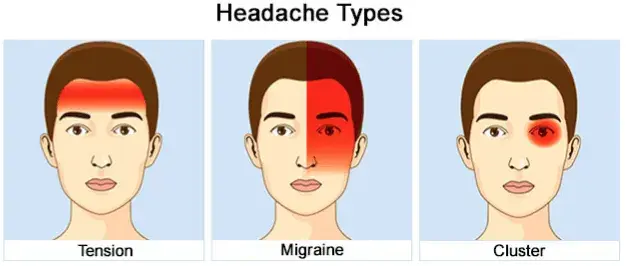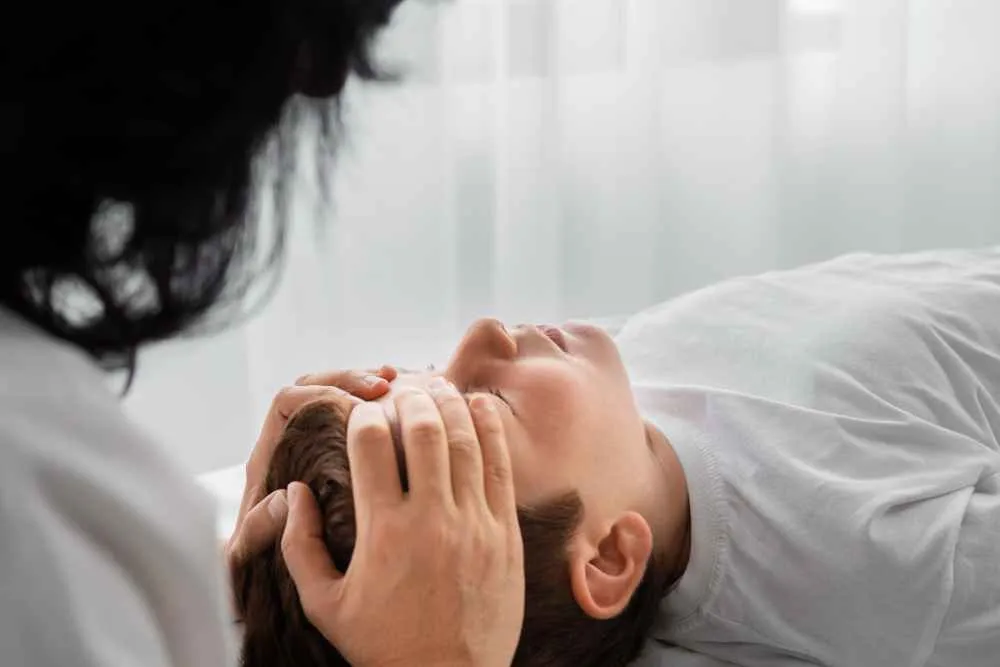Migraines are a common condition that can cause severe headaches and other symptoms. Treating migraines involves a combination of preventive measures, self-care remedies, and medications. Preventive measures include maintaining a healthy lifestyle, avoiding triggers, and practicing stress-management techniques. Self-care remedies include rest, hydration, and using cold or heat therapy. Medications to treat migraines include over-the-counter pain relievers, triptans, nonsteroidal anti-inflammatory drugs (NSAIDs), and preventative medications. Also, many home-based treatments can help relieve migraine symptoms. In this blog post, we will explore 13 natural treatments for migraines. If your migraine symptoms persist, you must consult a healthcare provider to determine the best treatment plan based on the frequency and severity of migraines.
What are migraines?

Migraines are a type of headache that various symptoms, such as throbbing pain, nausea, and sensitivity to light and sound, can accompany. They can range in severity and duration and can be debilitating for some people. Migraines are often hereditary and tend to run in families. They are more common in women than men, and most people who experience migraines begin to have them during adolescence or early adulthood. There are two types of migraines: with aura and without aura. Aura refers to neurological symptoms that occur before or during a migraine. These can include flashes of light, blind spots, tingling in the hands or face, and temporary paralysis on one side of the body. Not everyone who experiences migraines will have an aura.
Read Also: Migraine: 4 Yoga Poses for Relief from Pounding Pain
What are the Symptoms of migraine?

Symptoms of a migraine can vary but may include:
- Throbbing or pulsing head pain, often on one side of the head
- Nausea and vomiting
- Sensitivity to light, sound, and sometimes smell
- Blurred vision or other vision changes
- Lightheadedness or dizziness
- Tingling or numbness in the arms or legs
- Difficulty concentrating or thinking
- Fatigue or drowsiness
Migraine symptoms can range in severity and duration and may interfere with daily activities. If you are experiencing severe or frequent migraines or are causing you concern, it's important to consult a healthcare provider for proper diagnosis and treatment.
Also Read: What Triggers A Migraine Attack?
Home-based methods for treating migraines -
Here are 13 home-based methods for treating migraines
1.Apply a cold or hot pack
Applying a cold pack to your forehead or temples may help reduce inflammation and pain, while a hot pack may help relax tense muscles. Experiment with both to see which works best for you.
2.Take over-the-counter pain medications
Nonsteroidal anti-inflammatory drugs (NSAIDs) such as ibuprofen and acetaminophen can help reduce the pain of migraines. Follow the instructions on the label and do not exceed the recommended dosage.
3.Try caffeine
Caffeine can constrict blood vessels and may help reduce the severity of migraines. However, be aware that caffeine can also be a trigger for some people, so use it cautiously.
4.Use herbal remedies
Herbal remedies such as butterbur, feverfew, and ginger may help prevent migraines. Please consult a healthcare provider before taking any herbal remedies to ensure they are safe and appropriate.
5.Get plenty of rest and sleep:
This can help reduce the frequency and severity of migraines. Make sure to get at least 7-9 hours of sleep per night and create a consistent sleep schedule. If you have trouble sleeping, try incorporating relaxation techniques such as deep breathing or meditation before bed.
6.Avoid triggers
Keep a migraine diary to identify and avoid triggers, such as certain foods, drinks, and activities that may cause migraines. Common triggers include alcohol, caffeine, and foods containing artificial sweeteners, additives, or preservatives. Avoiding known triggers can help prevent migraines.
7.Stay hydrated
Drink plenty of water and other fluids to help in treating migraines. Dehydration can be a common trigger of the symptoms of migraines, so it's important to stay hydrated by drinking plenty of water throughout the day.
8.Use essential oils
Aromatherapy with essential oils such as peppermint and lavender may help reduce the severity of migraines. Try adding a few drops of essential oil to a diffuser or applying it to your temples or neck.
9.Practice relaxation techniques
Techniques such as deep breathing, meditation, and yoga can help reduce stress and tension, which may help prevent migraines. Please take a few minutes each day to practice relaxation techniques and try to incorporate them into your daily routine.
10.Get regular exercise
Regular physical activity may help reduce the frequency and severity of migraines. Aim for at least 30 minutes of moderate-intensity exercise, such as brisk walking or cycling, most days of the week.
11.Eat a healthy diet
A diet rich in fruits, vegetables, and whole grains may help prevent migraines. Try to eat a well-balanced diet and avoid skipping meals.
12.Consider supplements
Supplements such as magnesium, riboflavin, and Coenzyme Q10 may help prevent migraines. Please consult a healthcare provider before taking any supplements to ensure they are safe and appropriate.
13.Get regular acupuncture
Acupuncture may help reduce the frequency and severity of migraines. Consider finding a qualified acupuncturist in your area and incorporating acupuncture into your migraine management plan. It's important to note that what works for one person may not work for another, and it may take some trial and error to find the most effective treatment for your migraines. If you are experiencing severe or frequent migraines, you must consult a healthcare provider for proper diagnosis and treatment.
Also Read: Home remedies to immediately deal with migraine
Conclusion
There is no one-size-fits-all solution to migraines, but many effective treatments are available. Treating migraines involves a multifaceted approach, including lifestyle changes, self-care remedies, and medications. If you suffer from migraines, work with your healthcare provider to find a treatment plan that works for you. If you're looking for alternative or complementary methods to try, the 13 home-based methods described in this article may give you some relief.
Also Read: How Long Does A Migraine Last?
Frequently Asked Questions
What are the treatments for migraines?
Treatment for migraines can vary depending on the frequency and severity of the headaches. Options may include over-the-counter or prescription medications, lifestyle changes, and alternative therapies such as acupuncture or chiropractic care.
Can migraines be prevented?
In some cases, migraines may be preventable by identifying and avoiding triggers, practicing relaxation techniques, and getting regular exercise and enough sleep. It is also helpful to maintain a healthy diet and stay hydrated.
When should I see a healthcare provider for my migraines?
If you are experiencing severe or frequent migraines or are interfering with your daily activities, it's important to consult a healthcare provider for proper diagnosis and treatment. It's also a good idea to see a healthcare provider if you have any unusual or concerning symptoms or if your migraines worsen over time.
What are the symptoms of a migraine?
Symptoms of a migraine can vary but may include throbbing or pulsing head pain, nausea, vomiting, sensitivity to light and sound, and vision changes.
How are migraines diagnosed?
A healthcare provider typically diagnoses migraines based on a patient's medical history and a physical examination. They may also order imaging tests, such as a CT scan or MRI, to rule out other potential causes of the headache.

Reviewed by







